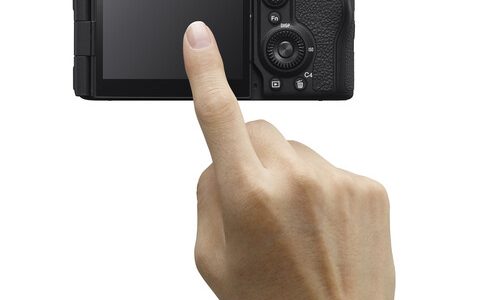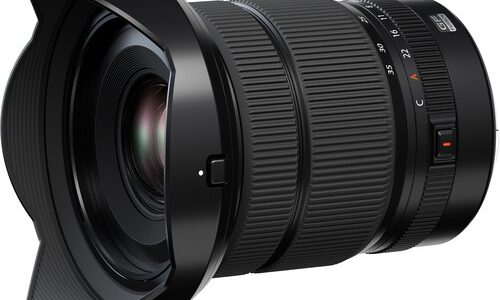

General Outlook

Will we see a last top-end DSLR, probably from Nikon? While this looks like a DSLR, note the film window. You’re looking at a Nikon F6 FILM SLR, released at the end of the transition from film to digital – Nikon just may do it again?
The big news of 2021, that will continue into 2022, is the accelerated transition from DSLR to mirrorless. The Pentax K3 mk III is almost certainly the last enthusiast APS-C DSLR ever to be introduced. I’d give it a well over 50% chance of being the last APS-C DSLR, period (the alternative is an extremely cost-engineered model from either Canon, Nikon or both). There’s a significant chance that it is the LAST DSLR ever introduced – there may or may not be one more full-frame Nikon in the “D850 replacement or D850 plus” class, and there may or may not be one or two extremely cost-engineered models under $500. Unless there is a last statement model coming from Nikon (they did that with the F6 – years after anyone expected it, they released a film camera that defined modern 35mm film cameras), there is essentially no energy being put into DSLR engineering any more. Canon has already denied any more high-end DSLRs (specifically any EOS-1 models, but the way it was worded, it seemed likely to apply more broadly).
At the same time, the push to full-frame from Canon and Sony (and, to a lesser extent, Nikon) continues to get stronger. Sony has, at least temporarily, halted production on every APS-C camera body they make. Canon has released EOS-M bodies through late 2020, but no lenses since 2018. Everybody except Fujifilm has decided that the future of the camera market lies in full-frame mirrorless. This could actually put Fujifilm in an interestingly good position, because they will have a cost versus features/durability advantage at the entry level, and a significant image quality advantage in a niche market at the very top. Nikon is the other company that is in an interesting position – their APS-C mirrorless line is much more compatible with their full-frame line than Canon’s is (mostly versus not at all), and we’ll see what Sony does with APS-C (Sony is also mostly compatible, and has a much broader APS-C lens line than Nikon, although it’s riddled with lousy lenses).

A major issue that the manufacturers need to confront is what is available to the buyer of a first interchangeable lens camera moving up from a smartphone. As of early January, 2022, the entry point for a new camera (used cameras are also an option) is around $500 for a body, which buys a Canon Rebel T7 DSLR or a number of mirrorless models, all of which are either EOS-M or Micro 43. The entry point to avoid a dead-end mount is $650 for a Sony a6000, which, at eight years old, is well past its “best by” date. $800 gets you into Fujifilm APS-C, and $1000 is the entry point to a desirable full-frame mount with the Canon EOS-RP. Nikon mirrorless starts at $800 for an APS-C Z50 while $1300 buys a modern, image-stabilized, full-frame Z5. Sony FE starts at either $1400 for a discontinued A7II while supplies last or $2000 for a current A7III. These are all without any major sales – Presidents’ Day in the US will bring some significant discounts (we may see a Z5 around $1000, especially if you look at the implied price of a body sold with a lens), although A7IIs in particular may also become harder to come by.
Cameras in the $500 to $1000 range are critical, because they are what bring new people in, some of whom will become more serious photographers and later buy a $2000 camera from the maker they first chose. Right now, both Nikon and Fujifilm are better positioned in that space than market leaders Canon and Sony. Canon has the only full-frame body under $1000, but the slightly more expensive Nikon Z5 is a much more capable body than the Canon EOS-RP, and Nikon has (mostly) compatible APS-C bodies to get people into Z-mount. Fujifilm has a wide selection of models under and around $1000, and they are far more capable and better built than anything full-frame in that price range. The $1000 X-S10 is about as much camera as something like a Z6 or an A7 III/A7C and significantly more capable than an EOS-RP or even a Z5.
I’m almost sure that Canon and Sony aren’t sitting still, less sure what their next move is. Will Canon develop APS-C EOS-R bodies, or will they update the EOS-RP instead? Will Sony get back into the APS-C game, and if so, will they restart some existing bodies or start with a new line? Will Sony replace the old models they cleared out with new, deliberately cheaper full-frame – they must be able to build something as capable as an A7 II with a significantly lower bill of materials than that 2014 camera? This will be one of the most interesting parts of the market to watch in the next year.
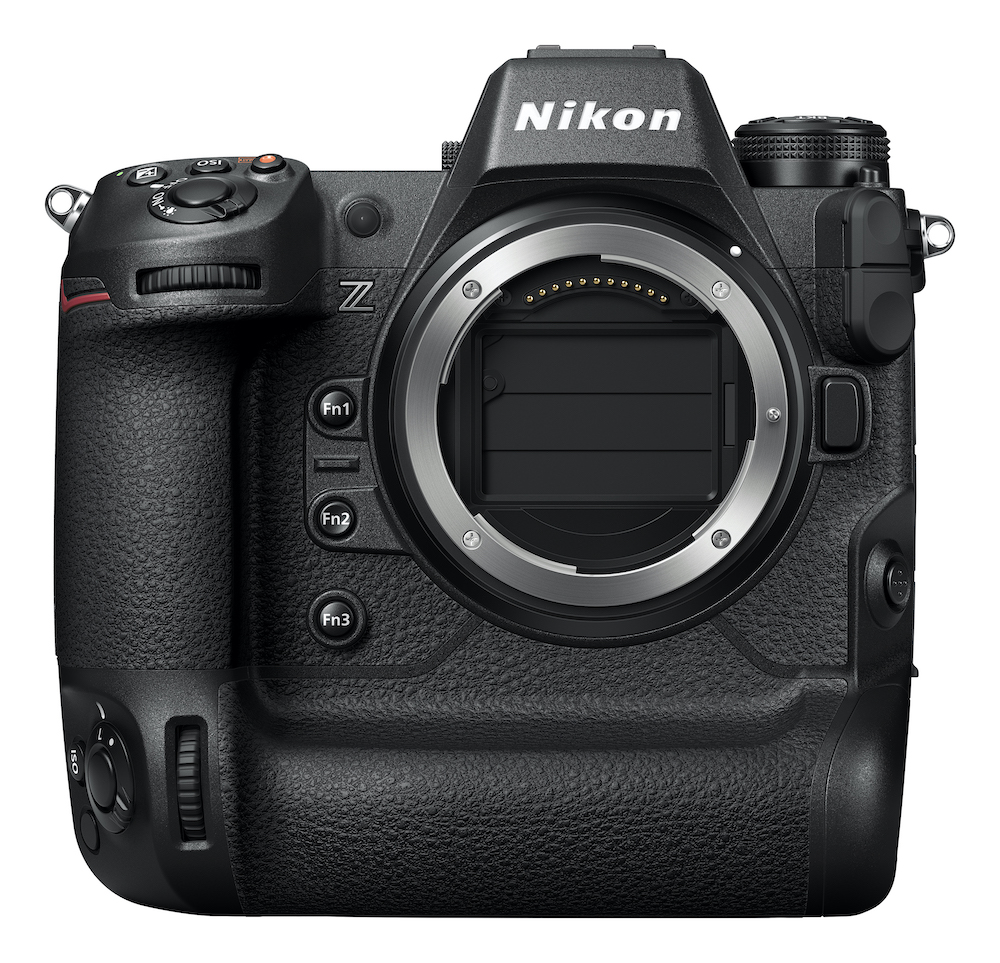
Another interesting trend to watch will whether we see more shutterless cameras. Although it’s (ironically) pictured with a closed “shutter” more than most cameras, the Nikon Z9 actually doesn’t have a shutter – that’s a sensor protector that doesn’t control exposure. Prior to the Z9, any camera that lacked a mechanical shutter was either a dedicated video camera (some of which can shoot stills on the side) or one of Sigma’s weird fp series. Both the Sony A1 and Canon EOS-R3 are meant to be mostly shutterless – to operate in pure electronic shutter mode most of the time – but they still have mechanical shutters.
Making a practical shutterless camera requires a very fast sensor readout – if a camera has a slow (or even average-speed) readout and no mechanical shutter, there are several negative effects. First, the maximum flash sync speed will be very low – many cameras either don’t work with flash at all in electronic shutter mode, or have a sync speed of 1/15, 1/30 or 1/60 second in that mode. If the camera also has a mechanical shutter, no problem – use flash with the mechanical shutter and get the expected sync speed (usually between 1/125 and 1/250 second). If the camera has a stacked sensor, the e-shutter is fast enough to offer a sync speed in that 1/125-1/250 second range.
If the mechanical shutter is gone but the sensor isn’t stacked, the only possible sync speeds are the slow ones from the e-shutter (with the ultimate in absurdity being the Sigma fp l’s 1/15 second – as slow as a 4×5” press camera, but those also had leaf shutters in the lenses for faster sync). Related problems with slow e-shutters include “jellocam” effects on moving subjects and banding with flickering artificial lights and screens. The faster the e-shutter, the less these issues matter. The stacked sensor cameras have sensor readout times in the 1/180 -1/250 second range (they offer faster shutter speeds, occasionally up to 1/32000 second, but those are achieved by reading the sensor out in pieces, causing the problems mentioned above). Those speeds are fast enough that the mechanical shutter is marginally necessary (Canon, Sony) or can be eliminated altogether (according to Nikon) Most cameras without a stacked sensor have a readout time closer to 1/30 second or so, making the mechanical shutter necessary.
Mechanical shutters and stacked sensors both add cost and complexity to a camera, but every camera so far needs one or the other (so do the Sigmas – they NEED a mechanical shutter, but don’t HAVE one). At some point, the production costs of the stacked sensor will come down to the point where it is much cheaper than using a mechanical shutter. I’d be more likely to see this point in 2023 or so than 2022 – I’d expect that we’ll continue to see mechanical shutters in most cameras introduced next year, with a few exceptions in speed and video oriented models that will use stacked sensors and may jettison the mechanical shutter. By a couple of years from now, eliminating the shutter mechanism will justify a stacked sensor in most new camera designs.
What to do?
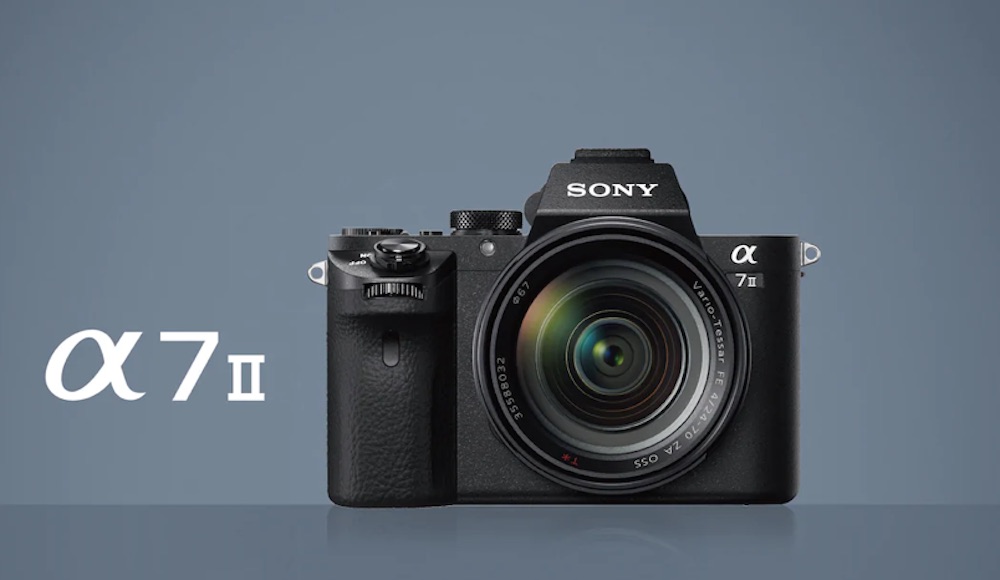
For those of us who already have an investment in a system (or a couple of them), what do we do? This will vary based on whether you have mirrorless or DSLR, and what sensor size. First of all, the easy case is if you already have full-frame mirrorless from any of the Big Three. Stay with what you have, adding whatever body or lens meets your needs – if you need anything at all – if not, time spent taking pictures is far more productive than time spent browsing camera shops on the web. There is essentially never any reason to cross between the three big full-frame systems – if someone else has something you are after, your brand will offer it soon (e.g. if you’re disappointed by the EOS-R3’s resolution, Canon’s already working on it). There was a lot of Nikon angst over the lack of video capabilities (the Z6 II and Z7 II are actually quite good, but not class-leading) and telephoto lenses. The Z9 just may be the most capable still/video hybrid camera on the market today, and, if Nikon can get the 400mm f2.8 and the two PF lenses onto shelves, they may also be the telephoto leader in six months. .
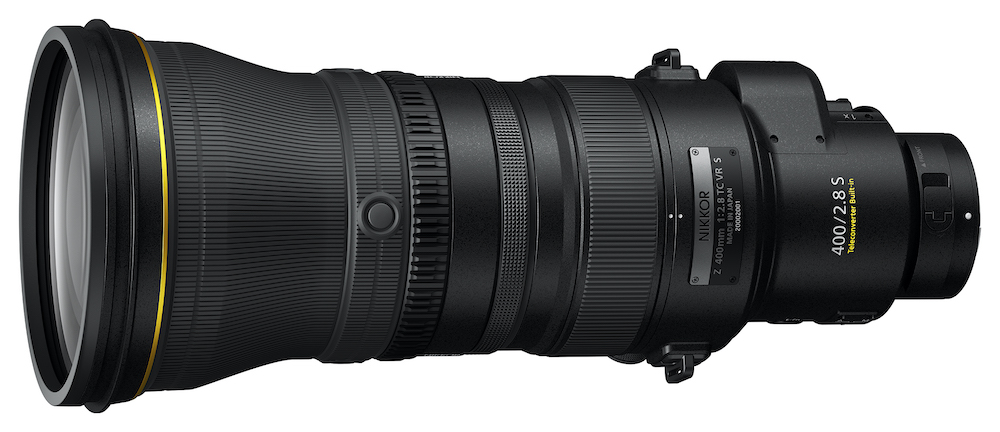
All three systems are under extremely active development, and the gaps in their lens lines are getting smaller and smaller – there’s no longer the “Nikon has no telephotos” type of gap. 2021 was a year where most of the development went to flagship high-speed cameras. My expectation for 2022 is that we’ll see some high-resolution cameras and some midrange and lower-end cameras, categories that were neglected while the sports-shooting flagships took up much of the engineering time. If you have L-mount, you probably bought in with a pretty good idea of what its pluses and minuses were – and you’re actually in better shape than you were in the past, because you have Sigma’s active participation filling holes in the lens selection. Bodies are less plentiful than lenses, but there are decent choices for all except high-speed uses.
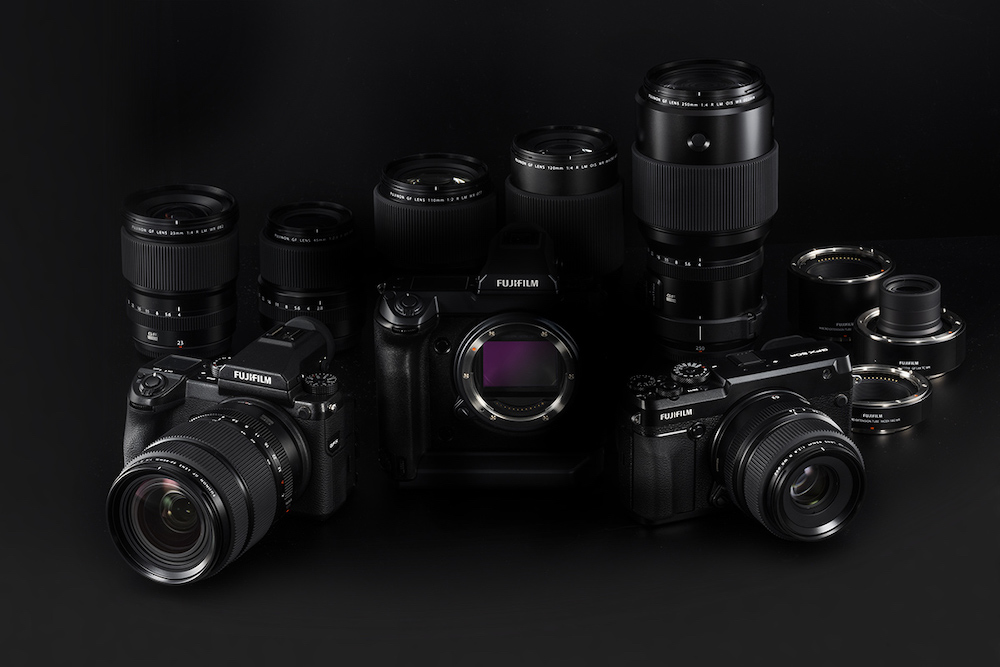
There is only one exception, and it’s a “maybe add”, while keeping your full-frame system. The exception is if you meet three conditions. You’d need to do a lot of contemplative photography, print big and be looking into a major investment in a high-res body. 2021 was the year that Fujifilm proved what GFX can do. If your interests match the focus of the GFX system, which are the same disciplines medium format has always excelled at, there is (and should continue to be) a 2:1 difference in maximum potential image quality between full frame and medium format. Even more importantly, GFX is a different format, with a different way of seeing. I don’t know how much is the resolution, and how much is the squarer frame, but I make a slightly different picture – GFX is a more unusual tool that can offer a creative boost. The GFX 100S was our camera of the year, and Fujifilm our manufacturer of the year, for those reasons. Most of us can’t sell our full-frame kits and move to only GFX, because so many of us shoot landscape, but also some wildlife – or architecture, but also some street – or contemplative portraiture, but also some action. Medium format shooters have always also had 35mm in their bags, and even Ansel Adams usually had his trusty Contax in some corner of his 8×10” kit – he got his wonderful portrait of Georgia O’Keeffe and Orville Cox with it.
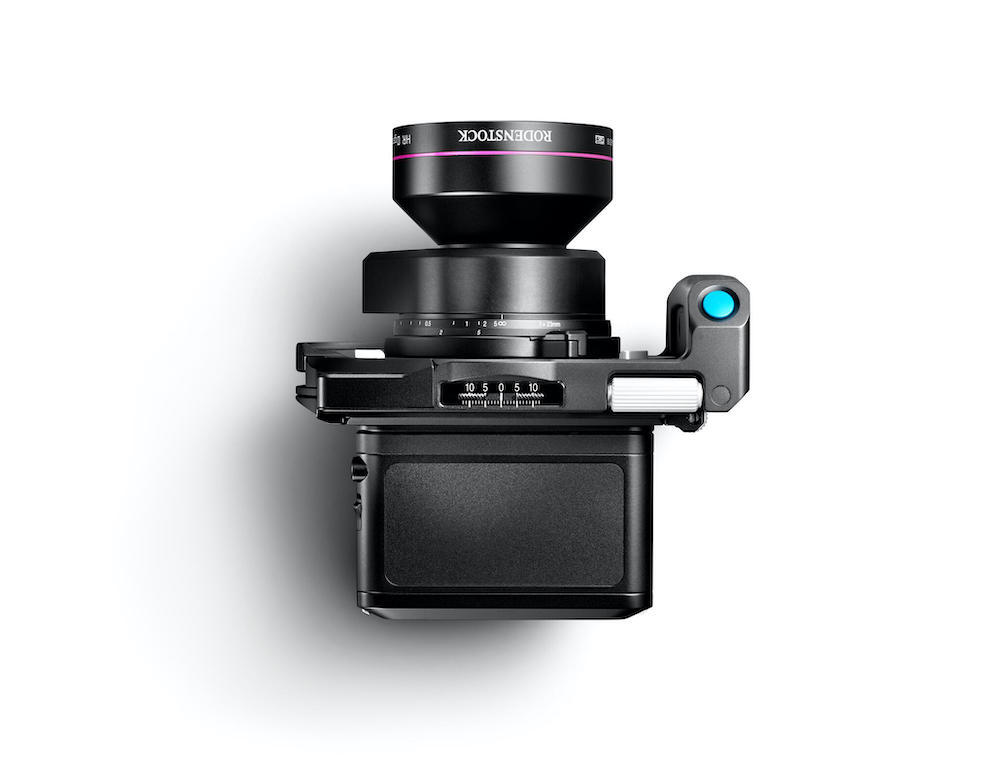
If some or all of your gear is medium format, you’re at one extreme end of the image quality curve, and your system is presumably well-researched. If you already have GFX (or Phase One), there’s nowhere to go! Assuming you bought it knowing what it is and isn’t good at, it’s literally the most capable system in the world for the images you want to make with it. Both systems are under very active development, with near 100% chances of ongoing support. If you have one of the older 50 MP Fujifilm bodies, don’t shoot with a GFX 100S unless you’re prepared to buy one and know where to get it (they’re just beginning to appear in stock)! The 102 MP sensor, stabilization and speed are all major improvements .
If you’re even considering Phase One, the great news is that it’s sold by boutique dealers who’ll really take the time to explain what it can do. If you already have Phase One, you’re part of a very small club, and there IS NO possible image quality upgrade other than upgrading your back – although GFX will give you image stabilization and possibly a less costly system to maintain. If you have Hasselblad, it’s worth seeing if DJI keeps supporting that system before making any decisions – we might see some interesting moves in the next year – if not, it’ll wind up in the Pentax 645 category – systems capable of spectacular quality, but not under active development . If you have Pentax 645 gear, the two possible moves are to stay or to move to GFX. Since the Pentax 645 system hasn’t been touched since 2015, I wouldn’t expect any new gear intros – but there’s a lot out there, both new and used.
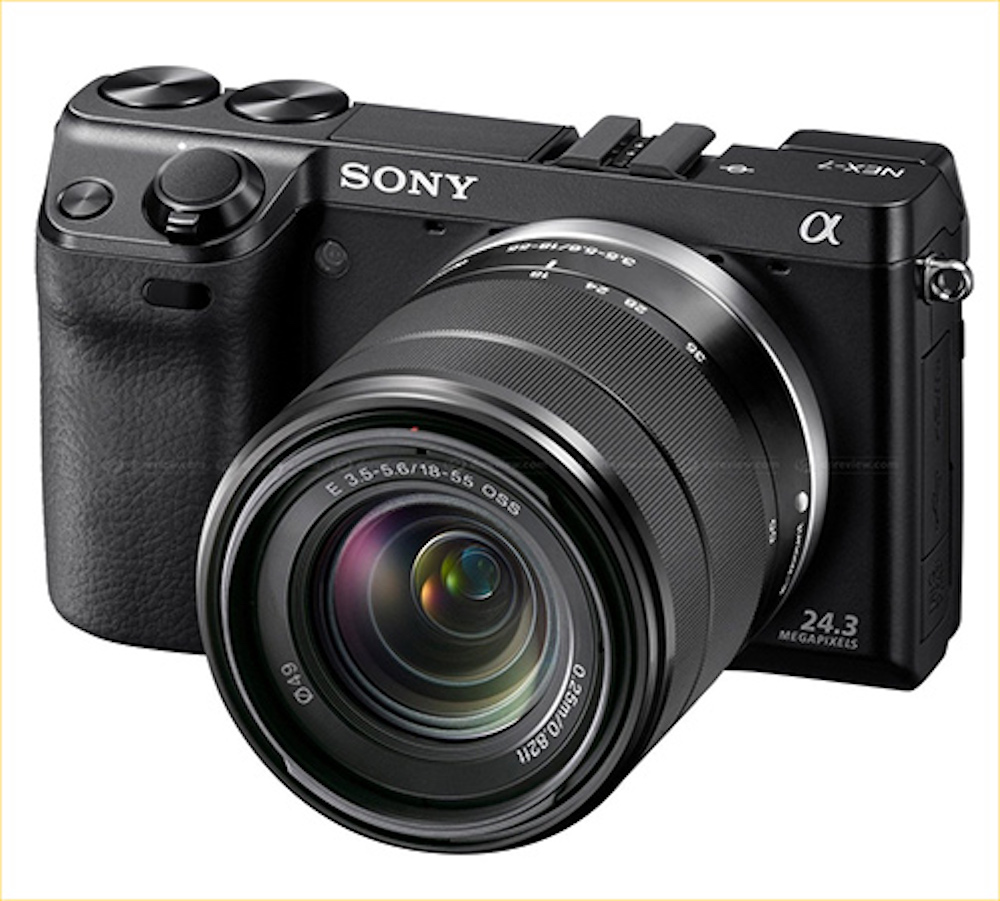
If you already have non-Fujifilm APS-C mirrorless, the logical direction for any upgrade you might want (assuming what you have is Sony or Nikon) is your own manufacturer’s full-frame system. If you have Canon EOS-M, this is less true, because the systems are much more different. EOS-R is certainly a very viable path, but if you prefer Nikon’s or Sony’s line (or, for that matter, Fujifilm X or even GFX), you won’t lose much.
If you have Fujifilm X APS-C mirrorless, it’s pretty much the same scenario as if you have full-frame from Canon, Nikon or Sony. You’re part of a system under extremely active development, with choices that will satisfy most needs. Unless you routinely print 16×24” or over, you have plenty of detail, and you have a lens line ready for anything – the exotics you can’t find in Fujifilm X are generally not found in any mirrorless mount. The overall quality of the X-mount lens range is extremely high. You also own as good a video camera as there is without paying close to $5000, if you have one of the newer bodies (especially the X-T4).
If you’re looking for a flagship A1-type camera, I’m hearing (unconfirmed) things that make me say “hang on – there may be something pretty close coming” – it will have a big video jump and higher resolution. If you’re looking for really high resolution and want to print big, Fujifilm would like you to add GFX to your X system, and it’s a move well worth considering. Make sure you’ve exhausted what your X gear can do – but if you want the ultimate in detail for big prints, consider the option of adding GFX for the work where it makes sense as an alternative to selling up and moving to full-frame. Since you’d keep the X system for many jobs, there wouldn’t be the expense of all new lenses at once – it could be cost-competitive, and it’s a big step in image quality.
If you have Micro 43, the decision becomes much tougher. Any other mirrorless system except EOS-M, the default decision is “stay”, or maybe “stay and add my own manufacturer’s larger sensor” if there’s justification. Occasionally, there’s an “add” if you do certain things, but I wouldn’t advocate “replace” for anything other than EOS-M, which very few of the LuLa readership probably own (unless it’s a pocket camera to keep from dragging your big system around). Micro 43, sadly, is falling more and more into the “replace” category. The problem, as it has been for at least the last couple years, is the Same Old Sensor, compounded by very expensive lenses that try to work around the sensor’s deficiencies (a $1400 f1.2 lens to try and get the effect of a $700 f1.8; a $7500 telezoom to avoid f6.3 at the long end). Unless the new sensor that’s “always a day away” is much improved, Micro 43 will fall farther and farther into niches.
It’s possible, even probable that the GH6 will be a strikingly good video camera – getting closer and closer to a dedicated one. It’s also possible that (with major noise and dynamic range improvements), a new OM System speed demon might offer a compact, affordable alternative to expensive sports cameras. It would have to be able to handle slow lenses, because “half the length, but two stops faster” creates lenses that are no smaller and no less complex than full-frame equivalents. If you aren’t as interested in video (for sure) or speed (maybe), I suspect that the performance gap is insurmountable, especially with full-frame becoming more and more standard. Your path forward might lie with any of the three major full-frame systems, but don’t overlook Fujifilm X, which has much of the compactness that drew you to Micro 4/3.
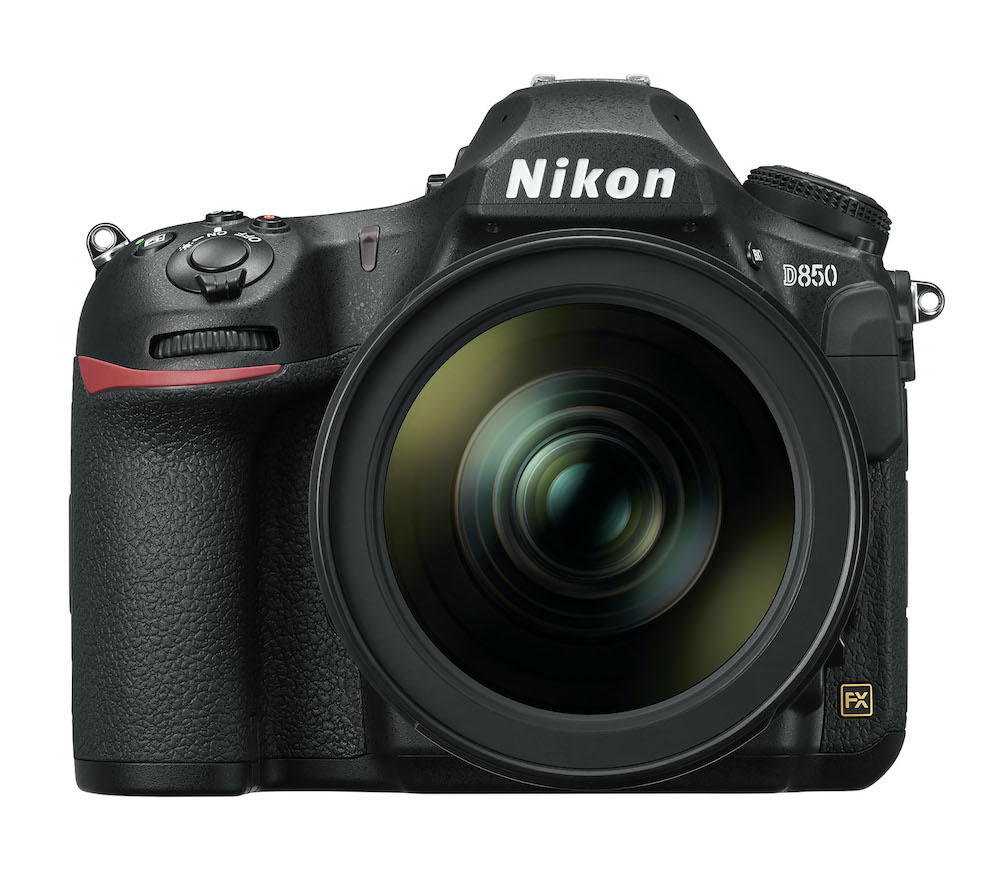
If you have a DSLR, there are a few questions to ask. The first is “are you satisfied with what you have now, and are you satisfied with what’s already out there for your DSLR system”? If yes to the first (as with any camera), no matter what you have, stop browsing B&H’s website and go take pictures! If yes to the second, your camera will be repairable for a long time (unless it’s very old; and newer DSLRs are still easy to buy), and there are huge inventories of Canon and Nikon lenses (both new and used) – the lens you need will still be around if it exists today. If you’re not satisfied with the current possibilities, it’s probably not worth waiting for something new (exception: Nikon full-frame users stand a decent chance, but no guarantee, of seeing a statement camera: see below under Nikon).
If you aren’t satisfied with your DSLR, why? If you want in-body image stabilization, newer lens designs or a smaller and lighter system, a mirrorless system might serve you better. If you have a recent, reasonably high-end DSLR and want better focus performance, you may not know how to use your focus system to its full potential (they are extremely complex things). There are a few mirrorless models that will out-focus any DSLR – but those are beasts like the A1, Z9 and EOS-R3, not garden-variety cameras.
If you are thinking of replacing a DSLR, the question becomes what to replace it with. If your DSLR is full-frame and you have recent, high-value lenses, there is a strong incentive to stick with your brand when going mirrorless. Canon and Nikon are both excellent choices in mirrorless with very full lines (this changed significantly in 2021) – there is no longer as much of a countervailing incentive to go with a more complete mirrorless system (usually Sony). The first-party adapters work very well, and they can let you stretch out the process of replacing lenses – you may not replace certain lenses (a fisheye or some other infrequently used lens) even in the long term. Another advantage to sticking with your brand is that control placements carry over pretty well – Canons still speak Canonese (the R3,R5 and R6 more so than the older R and RP models), while Nikons definitely speak Nikonish (all of them – this was a triumph of the original Z6 and Z7). Even if you aren’t going to adapt any lenses (your DSLR is APS-C or you prefer the newer mirrorless lenses), your existing brand might receive first consideration due to the controls.
If you have an APS-C DSLR or something that doesn’t match any of the existing mirrorless systems (Sony A mount and Minolta match Sony FE), you have a wide-open choice between the big three full-frame systems, Fujifilm X and even GFX. . If you have a compact APS-C system or want something compact, Fujifilm X is a replacement to look into as well as your brand’s full-frame system (outside of Fujifilm, APS-C is MUCH less flexible and supported than full-frame).
By Manufacturer
Sony

The big camera headline of the tail end of 2021 was Sony decimating the lower end of their lineup. Sony, with a reputation as the most accessible of the major brands from the low price of the original A7 and their habit of keeping many older models on the market at substantial discounts, no longer has a non-discontinued body below $2000. I am almost 100% confident that this situation will not continue – but I am much less sure how they will alleviate it. Will they bring back any of the paused older models at all, or will they release a bunch of new ones in their places? Will they bring back APS-C, or will they go with inexpensive full-frame instead?
We can say a few things with some certainty about Sony in 2022. I would be nearly certain that we’ll see a lower-end full-frame body sometime during the year, and in time for the holiday season. It won’t necessarily be a new body – it could be the A7 III with a significant price reduction, the A7C brought back from hiatus at a lower price, or it could be something new. By next holiday season, and probably long before, we’ll see a Sony full-frame body below the Z5’s $1300 price point, and we’ll see something from Sony in the $700-$800 range, which could either be a very stripped down full-frame body, one of the higher-end APS-C bodies on pause brought back at a lower price, or a new APS-C body.
The other Sony I’m reasonably confident in is the A7r V. It could be a variation on the A7r IV, gaining improved menus and focus systems first seen on the A7 IV and A1, or it could be something bigger than that. If it’s bigger than that, it will be the first or second camera to feature a new “standard pixel”, the successor of the one in the A7r IV, that shows up across a range of sensor sizes. It will also probably get the new menus and some significant focus upgrades.
I’m expecting a minimum of two (A7r V and a lower-end body), and a maximum of five or six (A7r V plus a couple of other full-frame bodies, with two or three APS-C bodies making up the remainder) bodies from Sony in 2022. If we see a lot of bodies, some of them are going to be vlogger-centric designs (and it’s possible that the least expensive full-frame body will be designed for vlogging instead of photography – hopefully there’s a photo version with a viewfinder for $100 more).. They will be joined by several lenses – mostly replacing older, weak lenses – but perhaps an expansion as well, although expansions are getting harder and harder to fit into the lineup since so much has been done. Probably the best place for an expansion is a 300mm f2.8 or something in the same niche?
Canon
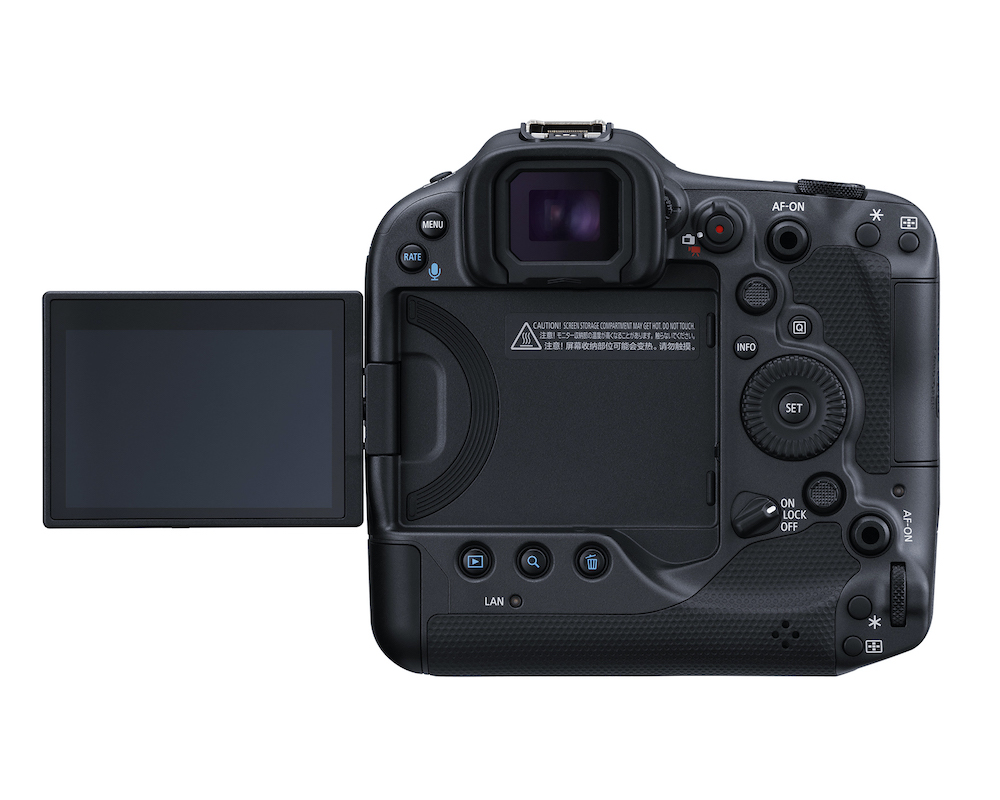
Canon is getting more pushback than they hoped for about the resolution of the EOS-R3. Everything else about the camera is gathering raves, but 24 MP is not an especially popular choice. Some of this is YouTuber hysteria, but some of it is real when the competition can come so close on speed while keeping resolution in the 45-50 MP class. You can always downsample a higher-resolution camera, but you can’t create more detail. One of their major projects has to be getting its higher-resolution companion body out there. Will it be a 45-50 MP class body? Or something higher than that? They just released the Cinema EOS R5C, an actively cooled variation on the EOS-R5 with an incredible collection of video modes.
Unlike any other Cinema EOS, the R5C is a highly capable still camera as well as a video camera with true cinema-grade video modes. The last time Canon did this was with the 1D X/1D C twins. To my surprise, the price premium over the stills-focused EOS-R5 is a modest $600 (the 1D X was $6800, while the cinema-oriented 1D C was $15,000). The R5C gains a bump on the back to accommodate the fan, and it’s a tiny bit (32 grams, or just over an ounce) heavier. The one real loss is the image stabilization of the EOS-R5. In return, it gains a lot of new video modes, including multiple raw video modes inherited from other members of the Cinema EOS lineup and a number of professional codecs. It captures 4K up to 120 P as well as 8K 60P (!!!). It also has video-centric displays like waveforms and vectorscopes (almost never seen on a non-Panasonic camera below truly dedicated cinema cameras).
Most of the added video modes require CFExpress cards (like the R5, the camera has 1 CFExpress and one SDXC card slot), and some actually require an external battery using USB-C Power Delivery. The camera’s own battery is the familiar LP-E6N, a two-cell, 7.4 volt battery, while the most intensive video modes need a 9 volt power source. As of now, the only way to get 9 volts in is either through USB Power Delivery or a dummy battery connected to a wall adapter. Two LP-E6Ns in a battery grip will NOT supply the higher voltage – they are wired in parallel. A battery grip using Canon’s higher-voltage LP-E19 battery from the EOS-R3 COULD enable the modes that need high voltage – but that grip does NOT exist as of this writing.
The line Canon needs to work on (beyond ultra-high resolution) is lower-end bodies. They presently have a totally incompatible APS-C system with a distinct shortage of lenses other than f6.3 zooms, then two long-in-the-tooth full-frame bodies with divergent interfaces and no image stabilization, then three (four if you count the R5C) very modern bodies with highly positive reviews, rock-solid stabilizers, Canon-like interfaces and the best sensors Canon has ever made – but those modern bodies START at $2499. Canon needs to release a sub-$1500 (preferably sub-$1300) full-frame body that shares EOS-R6 heritage, then another RF mount body or two below that – with the possibility that those lowest-end bodies are APS-C, but with the RF mount.
The Cinema EOS R5C just came out in mid-January, and I’m still expecting some high-resolution body later this year, which may or may not be the R3’s companion (it could also be a stills-focused, slower high-res body closer to the A7r and Z7 lines in concept), plus one to three lower-end bodies (at least one of which is full-frame). Canon has been all over the place on lenses and doesn’t release roadmaps, but I suspect an exotic telephoto and an f1.2 lens or two, probably along with some more ultracompact slow lenses, may be in the offing. Canon has patents out on more apodizing lenses like the 85mm f1.2 DS as well.
Nikon
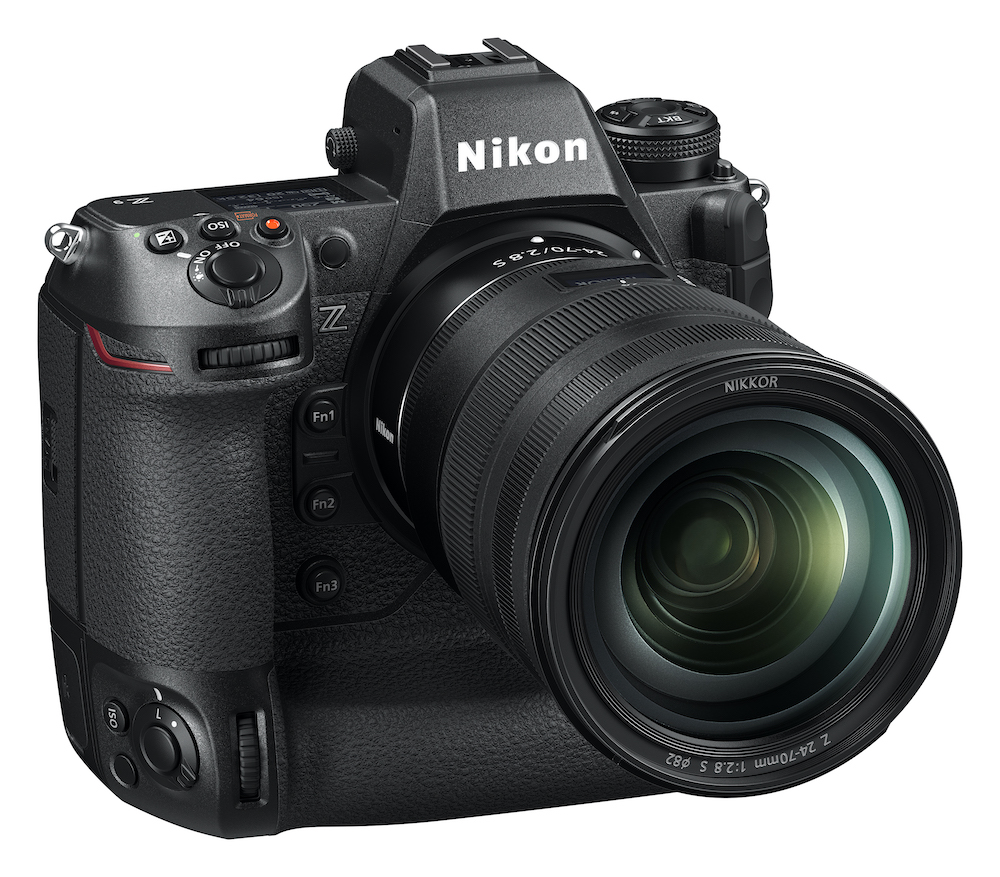
Despite all the naysayers, Nikon’s line is actually in very good shape – the Z9 more than met expectations, and they’ve come a long way on closing the telephoto gap. They have a sensible lineup that goes Z50 (APS-C), Z fc (APS-C, retro), Z5 (entry full-frame), Z6 II (mainstream full frame), Z7 II (pixel monster), Z9 (high-speed) The oldest of these cameras is from October, 2019, and they are all compatible. Other than the Z fc, they all operate very consistently – only Sony is similarly consistent. You can get into Nikon Z for $800, and you can find a camera for every need there.
The body that is the most heavily rumored is the “Z70” – an enthusiast APS-C camera that instantly evokes a couple of hallowed Nikons. The D70 was an extremely successful consumer DSLR that offered an incredible amount for the money. The D7x00 series have been Nikon’s best-selling enthusiast DSLRs through most of the 2010s – anything that uses a “70” number has a lot to live up to. It will probably be a faster Z50 with image stabilization (incredibly useful because it opens up a lot of superb full-frame Z lenses). It may also have some degree of weather sealing and should have improved autofocus. Can it sell for under $1000? The X-S10 does, and this is basically a Nikon X-S10. Nikon might even chase the X-T4 with one more enthusiast APS-C camera in the $1400 range. Full weather sealing, the best sensor and AF they can come up with, very high-end video modes and fast stills. Especially the “Z90” (another hallowed name, invokes the D90 and the film-era N90 and N90s) would need higher-end APS-C lenses, although the compact full-frame lenses reduce the number (the 50mm f1.8S would be a great APS-C portrait lens, with the 50mm f1.2S at the very top end). We could also see a very low-end APS-C “Z30” model from Nikon, quite possibly viewfinderless. A cheap camera from Nikon or anybody else is more likely after chip shortages have passed – nobody wants to use hard to get, expensive parts to build cameras with low profit margins. Hopefully by the end of 2022, we’ll see true entry-level cameras again.
Nikon’s full-frame models are new enough and well-enough spaced that they don’t really HAVE to do anything – it’s not like Canon’s old entry models with odd interfaces or Sony’s “nothing under $2000”. The most likely (and exciting) Nikon full-frame update would be a serious, new-sensor update to the Z6 II and Z7 II at the end of the year, or alternatively, a very high-resolution model slipped in above the Z7II, with the same relationship to the Z9 that the D850 has to the D6 – a slower, but higher resolution near co-flagship. The Z6 II/Z7 II update will almost certainly happen – the question is whether it is in late 2022 or in 2023. The additional high-resolution model may happen, or that camera may actually be the Z7 II replacement. It is possible that Nikon will try and get a full-frame body in under the Z5, but that would be tricky to do – perhaps the most likely (2023?) possibility is to update the Z5 and keep the original in the line at a reduced price?
The last possibility from Nikon is one last interesting DSLR. For a long time, the conventional wisdom has been that it would be a relatively minor update to the D850 – somewhat similar to how the D780 relates to the D750. Maybe the same sensor, maybe a modest boost, update all the live view functions and video with existing chips from the Z line. Thom Hogan has begun to speculate (and I agree with him, looking at what little information is out there) that, if Nikon makes a last DSLR at all, they might be more likely to do what they did with the F6. While the F6 looked like an F100, it performed and cost more like an F5. They did literally everything that could have been thrown into a film camera at the time, and they built a statement camera that is almost certainly the finest fully electronic 35mm film camera ever made (the mechanical beauty of a Leica rangefinder is an entirely different beast).
Nikon could build a statement DSLR that was clearly the last, but the finest DSLR ever made – let’s call it the D1000, although Nikon might not. If they did this, expect a sensor that either uses Sony’s next standard pixel or is comparable in resolution (well over 80 MP). Expect Z9 level processing or faster – the frame rate won’t be as fast as a D6 or a Z9 due to the resolution. Expect the best DSLR AF in history – think D6 through the prism, with near-Z9 capabilities in live view. Expect to pay – this isn’t a D850 successor, nor will it be priced like one. The same sensor is likely to show up in a Z7 III or a Z8 for D850 money, but the DSLR version will be a couple of thousand dollars more – closer to the D6 range. Of course, it’ll support all your old Nikkors (I’d be very disappointed not to see screw-drive AF, and not at all surprised to see provision for AI and even pre-AI lenses). We could also see a straight-up D850 replacement, for closer to a D850 price tag, but almost certainly not both (and possibly neither).
If I had to guess, Nikon’s 2022 additions are the Z70 in the first half of the year, with the Z30 slipping in just in time for the holidays and the Z90 waiting until 2023 if it appears at all. In full-frame, I’ll guess the Z6 III and Z7 III (with a resolution upgrade) late in the year, but that the Z5 II is a 2023 model (Z5 gets below $1000 with holiday promotions). Just for fun, with a ton of room for error, let’s put the D1000 in PhotoPlus season with the Z6III/Z7III.
Fujifilm
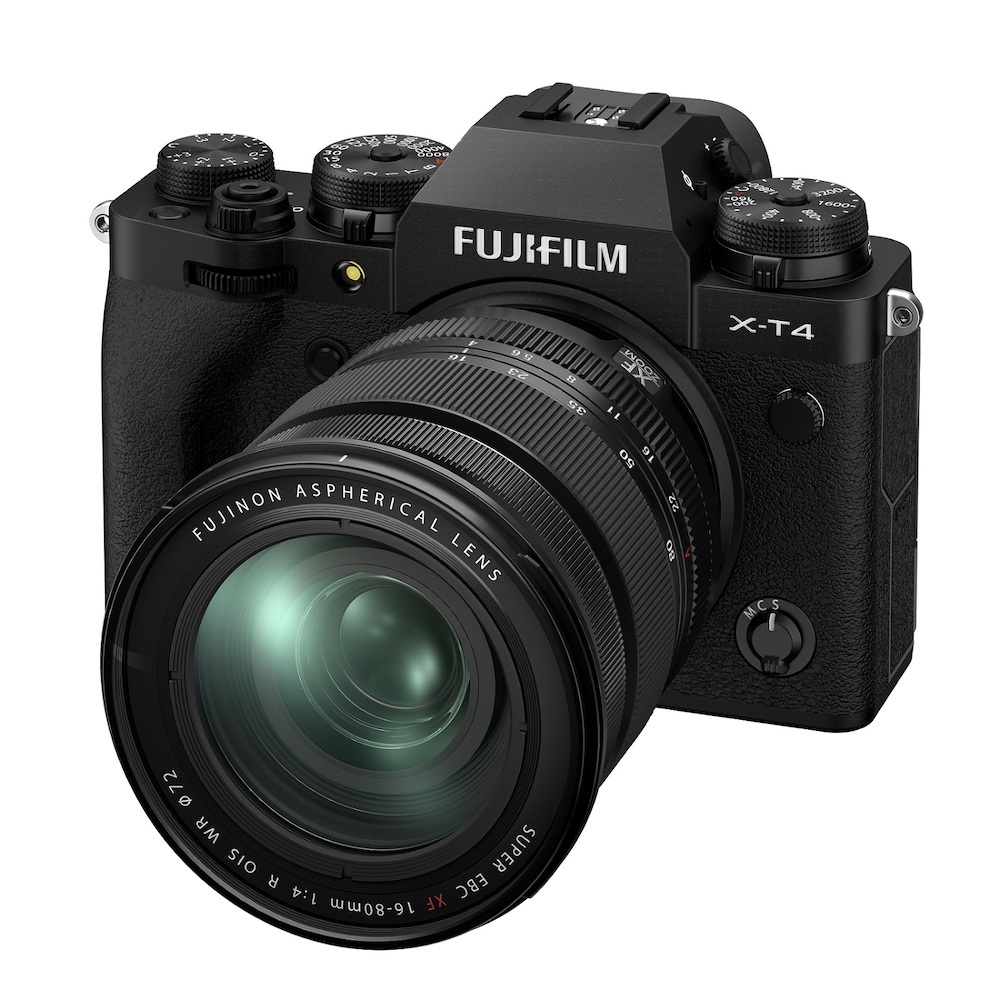
Fujifilm’s present line is very strong, with new, capable cameras at nearly every price point from $800 to $6000 and two great lens lines to back them up. The only fly in this enviable ointment is that they only have three sensors – and two of those are medium format. All of their APS-C cameras seen in Western markets use the same 26 MP sensor. Since the sensor is excellent and first seen in late 2018 (when it was the best cropped sensor in the world – it probably still is), it is much less of a problem than the 2015 model Same Old Sensor (which underperformed even then) is for Micro 43. It’s also less of a problem than Sony’s inexplicable decision to reuse the sensor from 2014’s a6000, excellent in its day, in every APS-C camera of their own since then, even while making a newer version for Fujifilm.
The 26 MP sensor is a comparable performer to most modern ~24 MP full-frame sensors. It has very similar resolution, and about a half-stop noise and dynamic range disadvantage compared to a Sony A7 III (the Fujifilm sensor has significantly more capable video modes – closer to an A7 IV in some implementations). It is even closer in performance to a Canon EOS-R6. Fujifilm is right, at least as far as ~24 MP sensors go – they’re getting very full-frame-like performance out of APS-C. What they lack is the ability to jump from a general-purpose sensor to a specialized sensor for video, high speed or high resolution The X-S10 is absolutely an A7 III/Z5 class camera positioned somewhat above the EOS-RP (the EOS-RP competes with the little X-E4), while the X-T4 is in the same class as the Z6 II, EOS-R6 and even the brand-new A7 IV. What Fujifilm hasn’t been able to do is chase the A9/EOS-R3 speed demons, the A7S III/Panasonic S1H video specialists or the A7r IV/Z7 II pixel monsters (although they have GFX for that). The A1/Z9 everything including the kitchen sink cameras are also out of range – for now.
Their next APS-C camera will feature a new sensor, and rumors focus on an X-H2, a camera somewhere in between the X-T4 and the A1/Z9 class. FujiRumors reports that it shoots 8K video, which means a ~40 MP sensor, and Fujifilm themselves have hinted strongly at a stacked sensor. Those specifications are looking awfully close to the A1/Z9 range (probably not all the way there), in what is rumored to be a ~$2500 camera. How about a balanced performer somewhere between the A7 IV level and the A1/Z9 level, with 8K video and something like 40 MP stills at 15 FPS, with excellent AF? Depending on the actual performance of the new sensor – wow! No, it’s not quite an A1 or a Z9, but it won’t cost $5500-$6500, either. It’s a lot closer than it has any right to be – of course, this is all conjecture. The stacked sensor was announced by Fujifilm themselves, although without details. The 40 MP number is from FujiRumors, although it’s mathematically necessary for the widely rumored 8K (no confirmation from Fujifilm on 8K, although it would make sense).
Knowing Fujifilm, the new sensor will slowly move down the line over the next couple of years. They tend to release a sensor in the top-end X-T or X-Pro bodies first, then spread it throughout the line over a period of a couple of years. In this case, they might use a new body above the X-T line for the initial deployment. Depending on when in the year they initially release the new sensor, we might or might not see multiple bodies with the new sensor this year. Fujifilm typically releases cameras at two times of year – once in January or February around the CP+ show in Japan, although they’re talking about an X-Summit in May this year. Could some or all of what would normally be late winter releases be May instead, possibly due to supply chain issues? Their second usual window is in September or October around PhotoPlus in New York, and in time for the winter holiday season. They will occasionally do two separate releases a few weeks apart around one of those times, and they will often sneak a lens or two out throughout the year. If they get the X-H2 out in the late-winter window, I’d expect either an X-T5, an X-Pro 4 or both in the fall. If the X-H2 (or whatever comes first) is a fall camera, the sensor won’t spread across the line until 2023. If the initial camera is a May release, as looks likely, maybe one more in the fall?
This year’s bodies will be dominated by one or more APS-C bodies with the new sensor, but there are a couple of GFX bodies we might see (probably in the fall release window if any at all). The most likely possibility is a “GFX 100R” – a compact rangefinder-style body with the 102 MP sensor. It might or might not be image-stabilized, but should be similar to the GFX 100S in most features, with more retro controls like the GFX 50R. Texas Leica? This one’s from Alaska (at least as far as image size goes)! Anything beyond that is probably a 2023 camera – but there’s a slight chance of something really new in the fall.
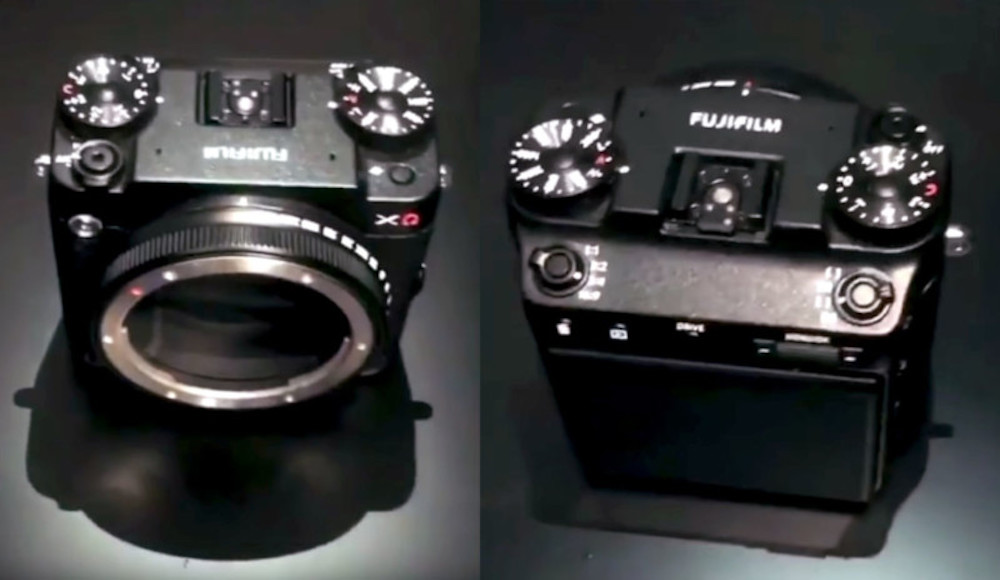
Fujifilm has played around with highly modular GFX designs (including publicly displayed prototypes), and seeing one make it into production wouldn’t be impossible. The third possibility is a ”GFX 150 (or 170)S”. This one’s pretty much inevitable at some point, if Sony does the same thing with their next sensor that they did with the previous generation (very likely) – but we don’t know if it’s fall 2022 (unlikely), winter 2023 or fall 2023 – or even later if Sony doesn’t prioritize the larger sensor sizes. We should see at least three roadmapped lenses (150-600mm and video-oriented 18-120mm for APS-C plus 20-35mm for GFX). My best guess would be that we’ll see at least one more non-roadmap lens, probably two or three (including a GFX lens). I wouldn’t be surprised, supply chain permitting, to see most or all of the roadmap lenses and the X-H2 earlier in the year, with some surprises in the fall.
Micro 43
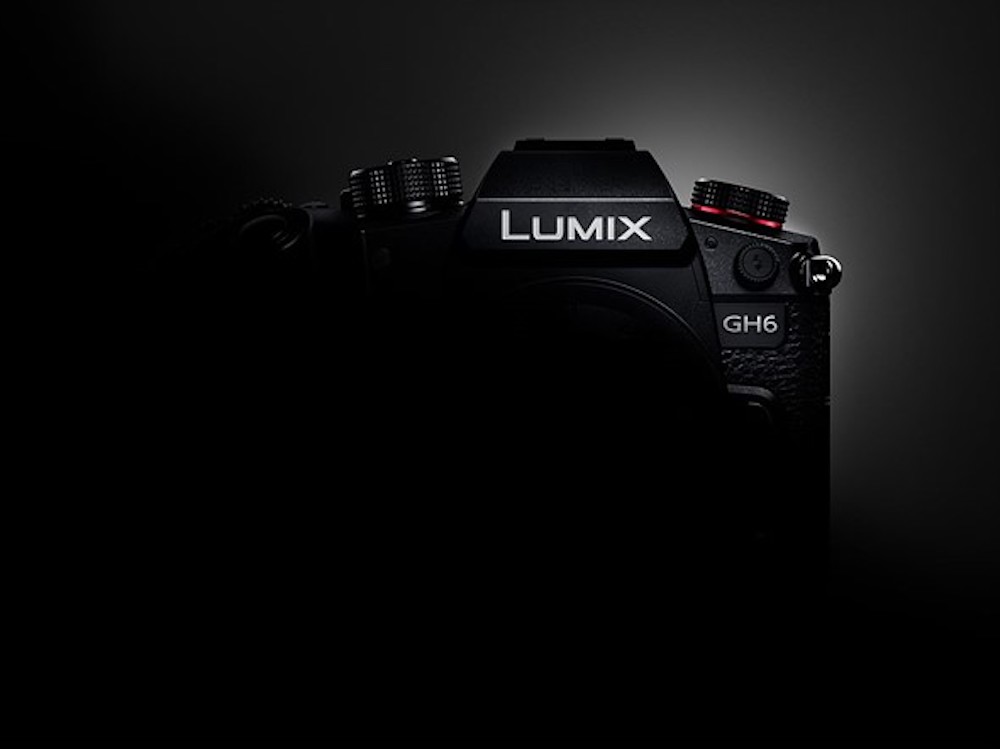
The GH6 is something I hope we can count on relatively early in 2022 (CP+???), and its performance will tell us a lot about the future (if any) of the format. It’s less certain when OM System’s new-sensor body might appear, but hopefully thar is also a 2022 item. If the new sensor can’t perform at the level of the 26 MP APS-C sensor (overall) or better, I suspect Micro 43 will either fail or enter a small niche soon afterwards. When the GH5 was introduced (and especially in the GH2 through GH4 era), there was no larger-sensored camera that could match the video chops of the GH series, and it had a niche of its own. At this point, many cameras can equal a GH5 for video, with far better stills performance. The GH6 either needs to regain video leadership, doing things even the A1 and Z9 can’t do, in order to continue to accept trailing-edge stills performance OR it could have excellent video and the stills performance of a really good APS-C camera. Either way, it needs to have seven years of sensor improvement and some compelling new features. If the rumored $2500 price tag is correct, it is aimed at exactly the same market as the X-H2, which may well be released soon after the GH6.
Panasonic is in a really tricky place unless the new sensor is an unexpectedly good performer, able to keep up with not only the present 26 MP APS-C sensor, but also whatever Fujifilm comes out with next. Half of their problem is that they will be competing directly against the X-H2, which should offer most of the same video modes, plus at least a smattering of 8K modes. My strong expectation is that the X-H2 will be a significantly better still camera than the GH6, and will come close as a video camera (a few more resolution and perhaps speed options for the X-H2, including 8K, while the GH6 may have some higher-end codecs or additional video tools). The other half of Panasonic’s problem is the new Canon Cinema EOS R5C. Yes, it’s a couple thousand dollars more than the GH6 is supposed to be, but it offers the highest-end codecs ever seen in anything that even pretends to be a hybrid camera. It has a full suite of video tools, which had been a Panasonic differentiation. The new Micro 43 sensor would have to be a real breakthrough to come CLOSE to the performance of a good full-frame sensor like the one in the R5C.
Even less is known about the new OM System camera, other than that they are working on at least one with a new sensor. We don’t know anything about price or specifications – even whether it will be the same sensor as the GH6 or another new sensor.
One or both of the new cameras would need to perform well enough to compete with the best of APS-C, or to have specific strengths that give photographers a reason to choose Micro 43. That has gotten harder and harder to do as the Same Old Sensor gets older and older – even at its introduction, DPReview reported that the Same Old Sensor had about a one-stop penalty compared to contemporary APS-C. With improvements in APS-C sensors while the Same Old Sensor soldiers on, that difference has increased. The task is tough, but it may not be impossible. We’ll see, and probably in the first half of 2022, whether Panasonic and OM System succeed.
L-Mount, Hasselblad and Pentax
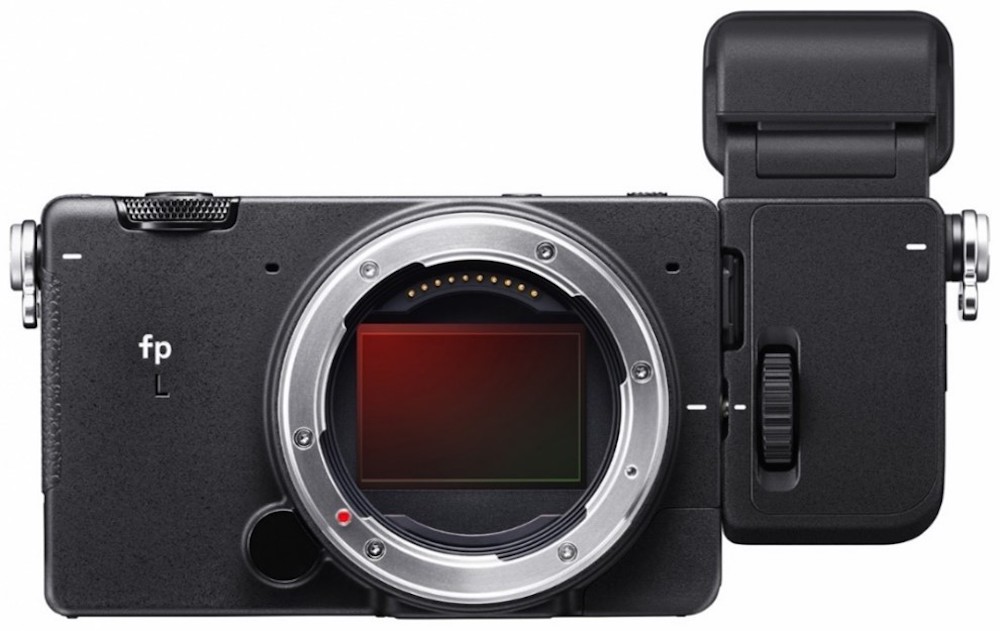
These three systems are together because they face significant existential struggles largely unrelated to technology. Panasonic and Leica have never successfully answered the question “why L-mount”. Sigma’s presence has helped tremendously with lenses (absent Sigma, I suspect L-mount would have run its course last year), but those same lenses are available for Sony FE. Nobody has introduced a camera that really makes the argument for L-mount. Panasonic’s S5 is a nice camera, but it doesn’t do anything to differentiate itself from the A7 III, the Z6 II or the EOS-R6, all three of which are part of major systems that are sure to stick around.
The S1H is more unique – only Sony’s A7S III and Canon’s Cinema EOS R5C are as video-oriented among full-frame cameras – but the three hybrid flagships all better it in actual video capabilities (although they need an Atomos recorder to match the collection of useful video tools). Not only would Panasonic need to update the S1H and also the S1R in meaningful ways, they’d need to do so in a way that really offers something different. The new Canon R5C is a very similar camera to the S1H in many ways – except that it is a couple of years newer, and takes advantage of significantly better sensor technology. Panasonic used to have an advantage in video tools – even when the codecs and data rates were similar, Panasonic offered things like waveform and vectorscope displays. Canon has now copied that internally, and many other cameras can do the same tricks using an Atomos. The Canon is also part of the successful EOS-R lineup, while the S1H is using the more questionable L-mount. Finally, if Sigma starts releasing RF lenses, there is a strong possibility (no guarantee, but they did it with DSLR lenses) that they may remount their mirrorless lenses for a few hundred dollars. This would further reduce incentives to stay with L-mount – many of the most popular L-mount lenses are Sigmas, and if Sigma is offering an off-ramp to RF, or Sony FE, or Nikon Z, that makes waiting for bodies less appealing
Sigma just might do something compelling with their forthcoming Foveon-based body (2022? 2023?). The previous generations of Foveon image sensor, like Sigma cameras in general, have been unique, with some exceptional characteristics but more limitations than advantages. Even when making non-Foveon cameras, Sigma can’t resist making odd design choices (like leaving the viewfinder, the .grip and even the shutter off). Yes, Nikon left the shutter off the Z9, but that is a very fast sensor which nearly eliminates rolling shutter effects and has a flash sync speed of 1/200 second. Sigma left the shutter off despite horrible rolling shutter and a sync speed of 1/15 second (recipient of the Pentax 67 Award for worst sync speed).
Previous Foveon sensors have had compelling image quality at very low ISOs, but have fallen apart by ISO 400 or 800. Sigma doesn’t need to nail ISO 51200, but a really compelling Foveon camera would need to beat everything on the market at ISO 50-800 (whether this includes medium format depends on the price and any other drawbacks), and it would need to be highly usable up to ISO 3200 or so. If it had substantial drawbacks (very slow frame rate, limited or no video, proprietary software etc.), it would need to have compensating advantages. It would also need to have usable ergonomics – no matter how tempting it is, don’t put the shutter button inside the lens mount or the hotshoe on the bottom of the camera! If you leave anything off, have a clear reason why and an obvious way to restore it without major drawbacks. A $2000 camera that is a low-ISO specialist (special below 800, at least as good as an A7 III up to 3200 or 6400) but clearly beats full-frame pixel monsters and is chasing GFX when used in its sweet spot could be compelling. If it’s a 1-3 fps camera with limited video, it needs to come closer to the GFX level than it does if it’s 5-7 fps and does good 4K30P or even 4K60P. The weirder it is and the more expensive it is, the better it has to be at what it does well. If it’s a $4000, 1-3 fps camera, it probably has to EXCEED GFX 100S image quality at low ISO.
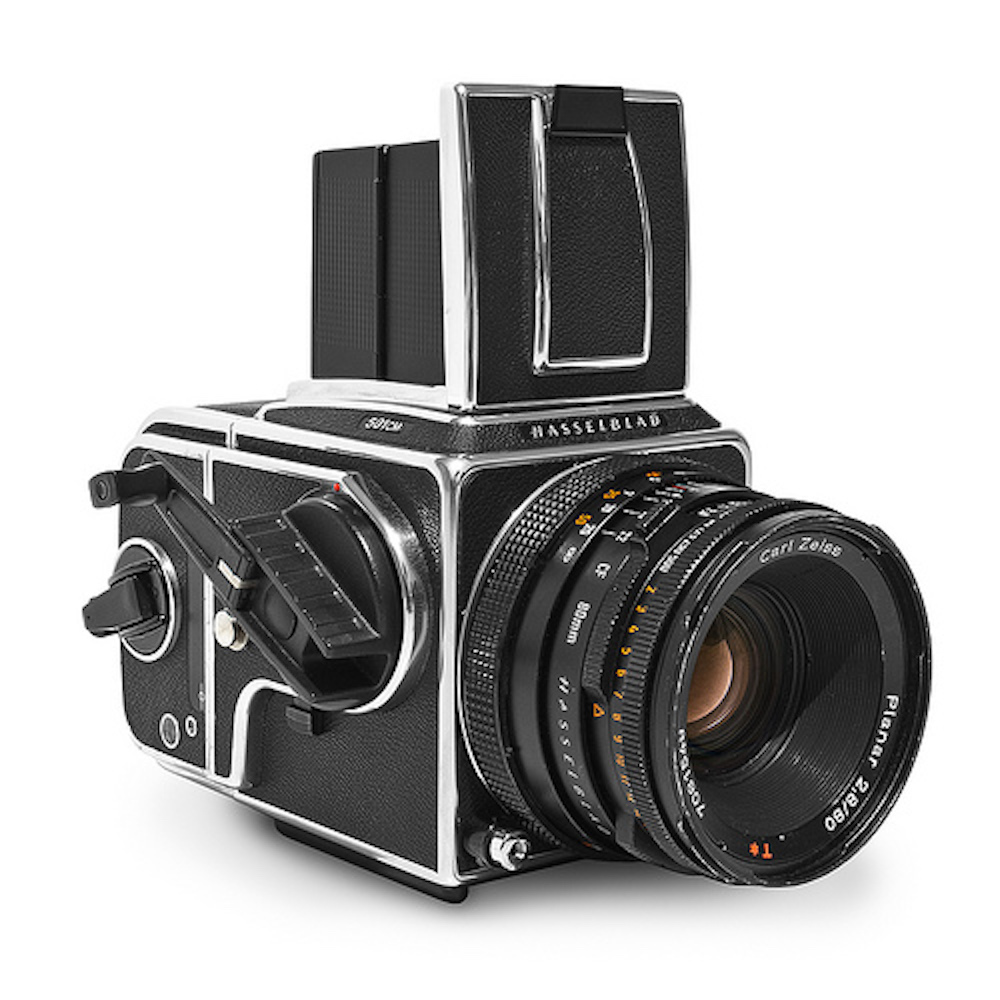
Hasselblad has a different problem – owner indifference. DJI needs to release something significant to show that they still care about the Hasselblad line. The 907X was a very interesting design and a start, but they haven’t gone anywhere with it yet (it’s modular, but there aren’t really any modules, and the only back option is the venerable 50 MP). There’s almost certainly room for two major players in medium format (plus Phase One at the very top), and Hasselblad is still in a better position than anybody else to be the second. Dropping the 102 MP sensor into either the 907X or the X1D shouldn’t be hard, and the fact that we haven’t seen it suggests that DJI just isn’t interested. Image stabilization might be a much bigger challenge, and they need to do it eventually, but maybe not on the next camera. Give us a 102 MP body or back and just about any new lens to show us you’re still out there, DJI.
Pentax simply may not have survivable volume – but they may have an odd lifeboat. If Nikon and Canon pull back too fast from DSLRs, they risk some users switching to Pentax instead of mirrorless. There are people who simply want a DSLR, and, if Pentax is the only game in town, they’re likely to get those users. There are many positive things about Pentax, too – excellent inventory of vintage lenses, extremely rugged camera design, great controls. Are there enough DSLR aficionados to keep them in the game?
Summary
2021 was the year of the flagship camera – we’ve seen capabilities we couldn’t have dreamed of before, from a semi-affordable camera that gets a couple hundred 8×10” transparencies on a memory card to one that shoots 30 fps and 8K video, the top cameras are incredible. 2022 will be the year of the midrange camera and of affordable full-frame. Three manufacturers offer excellent full-frame systems, while Fujifilm brackets them with APS-C and medium format. Any of the four could be the right choice, depending on your needs (and if you’ve chosen any of them, your manufacturer is probably making you happy). Lens lines have filled out so there are few glaring holes any more, and we’re seeing interesting lenses in all of the major mounts.
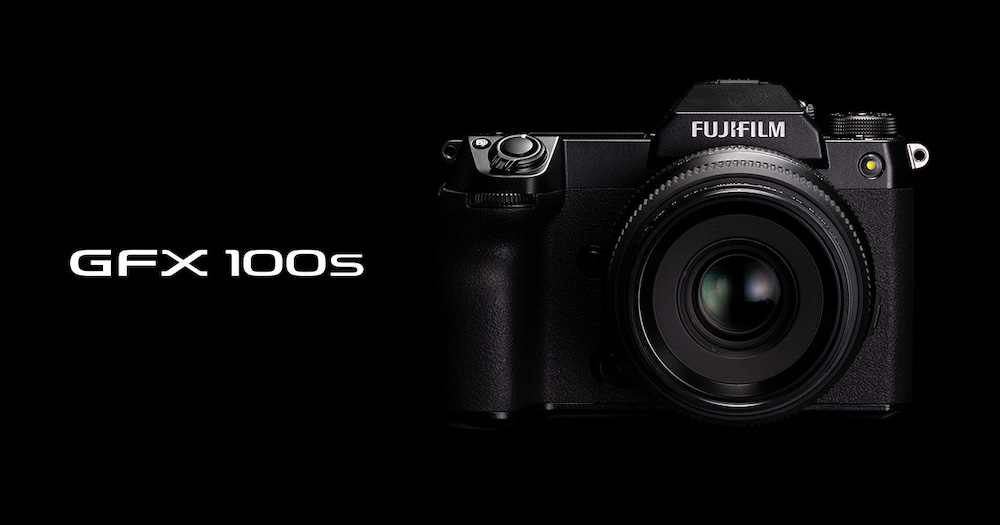
At the beginning of the year, Fujifilm released a camera whose image quality is so high that it’s still almost impossible to find in stock, while at the end of the year, “Nikon is dead” talk receded as the Z9 and the first of a bunch of long-awaited telephoto lenses revitalized the line. Going into 2022, both Fujifilm and Nikon are in enviable positions – they may well have gained on Canon and Sony. Sony needs to figure out how to replace all the sub-$2000 cameras they killed off in the end of the year, but they’ve been in the mirrorless game longer than anyone and they have a great line of upper-end bodies and lenses, led by the incredibly capable A1. Canon is still working on their DSLR-to-mirrorless strategy as they rapidly remove DSLR bodies and lenses from production, but the EOS-R line is strong and they come from a storied tradition and an enormous market share, All four will almost surely make it, and the only line (other than DSLRs) we may lose from a major manufacturer is EOS-M.
Beyond the Big Four, things get a lot less certain. Will Micro 43 get the breakthrough sensor they need? The delay of the two most important Micro 43 bodies in more than half a decade hurt them badly. Will L-mount get a camera that answers the question “why L-mount”? The lenses are there, and, because of Sigma, they will continue to be. Perfectly good cameras that are a lot like everyone else’s probably aren’t enough, because they don’t give people a reason not to go with three larger systems. The best hope for L-mount may be a unique video camera or two from Panasonic, or it may be for Sigma to finally hit a home run instead of a deep fly out with a Foveon sensor. Are there enough DSLR diehards to keep Pentax afloat?
Dan Wells
February 2022

Lorem ipsum dolor sit amet, consectetur adipiscing elit, sed do eiusmod tempor incididunt ut labore et dolore magna aliqua. Ut enim ad minim veniam, quis nostrud exercitation ullamco laboris nisi ut aliquip ex ea commodo consequat. Duis aute irure dolor in reprehenderit in voluptate velit esse cillum dolore eu fugiat nulla pariatur. Excepteur sint occaecat cupidatat non proident, sunt in culpa qui officia deserunt mollit anim id est laborum.
Lorem ipsum dolor sit amet, consectetur adipiscing elit, sed do eiusmod tempor incididunt ut labore et dolore magna aliqua. Ut enim ad minim veniam, quis nostrud exercitation ullamco laboris nisi ut aliquip ex ea commodo consequat. Duis aute irure dolor in reprehenderit in voluptate velit esse cillum dolore eu fugiat nulla pariatur. Excepteur sint occaecat cupidatat non proident, sunt in culpa qui officia deserunt mollit anim id est laborum.

Lorem ipsum dolor sit amet, consectetur adipiscing elit, sed do eiusmod tempor incididunt ut labore et dolore magna aliqua. Ut enim ad minim veniam, quis nostrud exercitation ullamco laboris nisi ut aliquip ex ea commodo consequat. Duis aute irure dolor in reprehenderit in voluptate velit esse cillum dolore eu fugiat nulla pariatur. Excepteur sint occaecat cupidatat non proident, sunt in culpa qui officia deserunt mollit anim id est laborum.
Lorem ipsum dolor sit amet, consectetur adipiscing elit, sed do eiusmod tempor incididunt ut labore et dolore magna aliqua. Ut enim ad minim veniam, quis nostrud exercitation ullamco laboris nisi ut aliquip ex ea commodo consequat. Duis aute irure dolor in reprehenderit in voluptate velit esse cillum dolore eu fugiat nulla pariatur. Excepteur sint occaecat cupidatat non proident, sunt in culpa qui officia deserunt mollit anim id est laborum.
Lorem ipsum dolor sit amet, consectetur adipiscing elit, sed do eiusmod tempor incididunt ut labore et dolore magna aliqua. Ut enim ad minim veniam, quis nostrud exercitation ullamco laboris nisi ut aliquip ex ea commodo consequat. Duis aute irure dolor in reprehenderit in voluptate velit esse cillum dolore eu fugiat nulla pariatur. Excepteur sint occaecat cupidatat non proident, sunt in culpa qui officia deserunt mollit anim id est laborum.
Lorem ipsum dolor sit amet, consectetur adipiscing elit, sed do eiusmod tempor incididunt ut labore et dolore magna aliqua. Ut enim ad minim veniam, quis nostrud exercitation ullamco laboris nisi ut aliquip ex ea commodo consequat. Duis aute irure dolor in reprehenderit in voluptate velit esse cillum dolore eu fugiat nulla pariatur. Excepteur sint occaecat cupidatat non proident, sunt in culpa qui officia deserunt mollit anim id est laborum.

Lorem ipsum dolor sit amet, consectetur adipiscing elit, sed do eiusmod tempor incididunt ut labore et dolore magna aliqua. Ut enim ad minim veniam, quis nostrud exercitation ullamco laboris nisi ut aliquip ex ea commodo consequat. Duis aute irure dolor in reprehenderit in voluptate velit esse cillum dolore eu fugiat nulla pariatur. Excepteur sint occaecat cupidatat non proident, sunt in culpa qui officia deserunt mollit anim id est laborum.
Lorem ipsum dolor sit amet, consectetur adipiscing elit, sed do eiusmod tempor incididunt ut labore et dolore magna aliqua. Ut enim ad minim veniam, quis nostrud exercitation ullamco laboris nisi ut aliquip ex ea commodo consequat. Duis aute irure dolor in reprehenderit in voluptate velit esse cillum dolore eu fugiat nulla pariatur. Excepteur sint occaecat cupidatat non proident, sunt in culpa qui officia deserunt mollit anim id est laborum.

Lorem ipsum dolor sit amet, consectetur adipiscing elit, sed do eiusmod tempor incididunt ut labore et dolore magna aliqua. Ut enim ad minim veniam, quis nostrud exercitation ullamco laboris nisi ut aliquip ex ea commodo consequat. Duis aute irure dolor in reprehenderit in voluptate velit esse cillum dolore eu fugiat nulla pariatur. Excepteur sint occaecat cupidatat non proident, sunt in culpa qui officia deserunt mollit anim id est laborum.
Lorem ipsum dolor sit amet, consectetur adipiscing elit, sed do eiusmod tempor incididunt ut labore et dolore magna aliqua. Ut enim ad minim veniam, quis nostrud exercitation ullamco laboris nisi ut aliquip ex ea commodo consequat. Duis aute irure dolor in reprehenderit in voluptate velit esse cillum dolore eu fugiat nulla pariatur. Excepteur sint occaecat cupidatat non proident, sunt in culpa qui officia deserunt mollit anim id est laborum.

Lorem ipsum dolor sit amet, consectetur adipiscing elit, sed do eiusmod tempor incididunt ut labore et dolore magna aliqua. Ut enim ad minim veniam, quis nostrud exercitation ullamco laboris nisi ut aliquip ex ea commodo consequat. Duis aute irure dolor in reprehenderit in voluptate velit esse cillum dolore eu fugiat nulla pariatur. Excepteur sint occaecat cupidatat non proident, sunt in culpa qui officia deserunt mollit anim id est laborum.
Lorem ipsum dolor sit amet, consectetur adipiscing elit, sed do eiusmod tempor incididunt ut labore et dolore magna aliqua. Ut enim ad minim veniam, quis nostrud exercitation ullamco laboris nisi ut aliquip ex ea commodo consequat. Duis aute irure dolor in reprehenderit in voluptate velit esse cillum dolore eu fugiat nulla pariatur. Excepteur sint occaecat cupidatat non proident, sunt in culpa qui officia deserunt mollit anim id est laborum.
Lorem ipsum dolor sit amet, consectetur adipiscing elit, sed do eiusmod tempor incididunt ut labore et dolore magna aliqua. Ut enim ad minim veniam, quis nostrud exercitation ullamco laboris nisi ut aliquip ex ea commodo consequat. Duis aute irure dolor in reprehenderit in voluptate velit esse cillum dolore eu fugiat nulla pariatur. Excepteur sint occaecat cupidatat non proident, sunt in culpa qui officia deserunt mollit anim id est laborum.
Lorem ipsum dolor sit amet, consectetur adipiscing elit, sed do eiusmod tempor incididunt ut labore et dolore magna aliqua. Ut enim ad minim veniam, quis nostrud exercitation ullamco laboris nisi ut aliquip ex ea commodo consequat. Duis aute irure dolor in reprehenderit in voluptate velit esse cillum dolore eu fugiat nulla pariatur. Excepteur sint occaecat cupidatat non proident, sunt in culpa qui officia deserunt mollit anim id est laborum.

Lorem ipsum dolor sit amet, consectetur adipiscing elit, sed do eiusmod tempor incididunt ut labore et dolore magna aliqua. Ut enim ad minim veniam, quis nostrud exercitation ullamco laboris nisi ut aliquip ex ea commodo consequat. Duis aute irure dolor in reprehenderit in voluptate velit esse cillum dolore eu fugiat nulla pariatur. Excepteur sint occaecat cupidatat non proident, sunt in culpa qui officia deserunt mollit anim id est laborum.
Lorem ipsum dolor sit amet, consectetur adipiscing elit, sed do eiusmod tempor incididunt ut labore et dolore magna aliqua. Ut enim ad minim veniam, quis nostrud exercitation ullamco laboris nisi ut aliquip ex ea commodo consequat. Duis aute irure dolor in reprehenderit in voluptate velit esse cillum dolore eu fugiat nulla pariatur. Excepteur sint occaecat cupidatat non proident, sunt in culpa qui officia deserunt mollit anim id est laborum.
Lorem ipsum dolor sit amet, consectetur adipiscing elit, sed do eiusmod tempor incididunt ut labore et dolore magna aliqua. Ut enim ad minim veniam, quis nostrud exercitation ullamco laboris nisi ut aliquip ex ea commodo consequat. Duis aute irure dolor in reprehenderit in voluptate velit esse cillum dolore eu fugiat nulla pariatur. Excepteur sint occaecat cupidatat non proident, sunt in culpa qui officia deserunt mollit anim id est laborum.
Lorem ipsum dolor sit amet, consectetur adipiscing elit, sed do eiusmod tempor incididunt ut labore et dolore magna aliqua. Ut enim ad minim veniam, quis nostrud exercitation ullamco laboris nisi ut aliquip ex ea commodo consequat. Duis aute irure dolor in reprehenderit in voluptate velit esse cillum dolore eu fugiat nulla pariatur. Excepteur sint occaecat cupidatat non proident, sunt in culpa qui officia deserunt mollit anim id est laborum.

Lorem ipsum dolor sit amet, consectetur adipiscing elit, sed do eiusmod tempor incididunt ut labore et dolore magna aliqua. Ut enim ad minim veniam, quis nostrud exercitation ullamco laboris nisi ut aliquip ex ea commodo consequat. Duis aute irure dolor in reprehenderit in voluptate velit esse cillum dolore eu fugiat nulla pariatur. Excepteur sint occaecat cupidatat non proident, sunt in culpa qui officia deserunt mollit anim id est laborum.

Lorem ipsum dolor sit amet, consectetur adipiscing elit, sed do eiusmod tempor incididunt ut labore et dolore magna aliqua. Ut enim ad minim veniam, quis nostrud exercitation ullamco laboris nisi ut aliquip ex ea commodo consequat. Duis aute irure dolor in reprehenderit in voluptate velit esse cillum dolore eu fugiat nulla pariatur. Excepteur sint occaecat cupidatat non proident, sunt in culpa qui officia deserunt mollit anim id est laborum.
Lorem ipsum dolor sit amet, consectetur adipiscing elit, sed do eiusmod tempor incididunt ut labore et dolore magna aliqua. Ut enim ad minim veniam, quis nostrud exercitation ullamco laboris nisi ut aliquip ex ea commodo consequat. Duis aute irure dolor in reprehenderit in voluptate velit esse cillum dolore eu fugiat nulla pariatur. Excepteur sint occaecat cupidatat non proident, sunt in culpa qui officia deserunt mollit anim id est laborum.
Lorem ipsum dolor sit amet, consectetur adipiscing elit, sed do eiusmod tempor incididunt ut labore et dolore magna aliqua. Ut enim ad minim veniam, quis nostrud exercitation ullamco laboris nisi ut aliquip ex ea commodo consequat. Duis aute irure dolor in reprehenderit in voluptate velit esse cillum dolore eu fugiat nulla pariatur. Excepteur sint occaecat cupidatat non proident, sunt in culpa qui officia deserunt mollit anim id est laborum.

Lorem ipsum dolor sit amet, consectetur adipiscing elit, sed do eiusmod tempor incididunt ut labore et dolore magna aliqua. Ut enim ad minim veniam, quis nostrud exercitation ullamco laboris nisi ut aliquip ex ea commodo consequat. Duis aute irure dolor in reprehenderit in voluptate velit esse cillum dolore eu fugiat nulla pariatur. Excepteur sint occaecat cupidatat non proident, sunt in culpa qui officia deserunt mollit anim id est laborum.
Lorem ipsum dolor sit amet, consectetur adipiscing elit, sed do eiusmod tempor incididunt ut labore et dolore magna aliqua. Ut enim ad minim veniam, quis nostrud exercitation ullamco laboris nisi ut aliquip ex ea commodo consequat. Duis aute irure dolor in reprehenderit in voluptate velit esse cillum dolore eu fugiat nulla pariatur. Excepteur sint occaecat cupidatat non proident, sunt in culpa qui officia deserunt mollit anim id est laborum.

Lorem ipsum dolor sit amet, consectetur adipiscing elit, sed do eiusmod tempor incididunt ut labore et dolore magna aliqua. Ut enim ad minim veniam, quis nostrud exercitation ullamco laboris nisi ut aliquip ex ea commodo consequat. Duis aute irure dolor in reprehenderit in voluptate velit esse cillum dolore eu fugiat nulla pariatur. Excepteur sint occaecat cupidatat non proident, sunt in culpa qui officia deserunt mollit anim id est laborum.

Lorem ipsum dolor sit amet, consectetur adipiscing elit, sed do eiusmod tempor incididunt ut labore et dolore magna aliqua. Ut enim ad minim veniam, quis nostrud exercitation ullamco laboris nisi ut aliquip ex ea commodo consequat. Duis aute irure dolor in reprehenderit in voluptate velit esse cillum dolore eu fugiat nulla pariatur. Excepteur sint occaecat cupidatat non proident, sunt in culpa qui officia deserunt mollit anim id est laborum.
Lorem ipsum dolor sit amet, consectetur adipiscing elit, sed do eiusmod tempor incididunt ut labore et dolore magna aliqua. Ut enim ad minim veniam, quis nostrud exercitation ullamco laboris nisi ut aliquip ex ea commodo consequat. Duis aute irure dolor in reprehenderit in voluptate velit esse cillum dolore eu fugiat nulla pariatur. Excepteur sint occaecat cupidatat non proident, sunt in culpa qui officia deserunt mollit anim id est laborum.

Lorem ipsum dolor sit amet, consectetur adipiscing elit, sed do eiusmod tempor incididunt ut labore et dolore magna aliqua. Ut enim ad minim veniam, quis nostrud exercitation ullamco laboris nisi ut aliquip ex ea commodo consequat. Duis aute irure dolor in reprehenderit in voluptate velit esse cillum dolore eu fugiat nulla pariatur. Excepteur sint occaecat cupidatat non proident, sunt in culpa qui officia deserunt mollit anim id est laborum.

Lorem ipsum dolor sit amet, consectetur adipiscing elit, sed do eiusmod tempor incididunt ut labore et dolore magna aliqua. Ut enim ad minim veniam, quis nostrud exercitation ullamco laboris nisi ut aliquip ex ea commodo consequat. Duis aute irure dolor in reprehenderit in voluptate velit esse cillum dolore eu fugiat nulla pariatur. Excepteur sint occaecat cupidatat non proident, sunt in culpa qui officia deserunt mollit anim id est laborum.
Lorem ipsum dolor sit amet, consectetur adipiscing elit, sed do eiusmod tempor incididunt ut labore et dolore magna aliqua. Ut enim ad minim veniam, quis nostrud exercitation ullamco laboris nisi ut aliquip ex ea commodo consequat. Duis aute irure dolor in reprehenderit in voluptate velit esse cillum dolore eu fugiat nulla pariatur. Excepteur sint occaecat cupidatat non proident, sunt in culpa qui officia deserunt mollit anim id est laborum.
Lorem ipsum dolor sit amet, consectetur adipiscing elit, sed do eiusmod tempor incididunt ut labore et dolore magna aliqua. Ut enim ad minim veniam, quis nostrud exercitation ullamco laboris nisi ut aliquip ex ea commodo consequat. Duis aute irure dolor in reprehenderit in voluptate velit esse cillum dolore eu fugiat nulla pariatur. Excepteur sint occaecat cupidatat non proident, sunt in culpa qui officia deserunt mollit anim id est laborum.

Lorem ipsum dolor sit amet, consectetur adipiscing elit, sed do eiusmod tempor incididunt ut labore et dolore magna aliqua. Ut enim ad minim veniam, quis nostrud exercitation ullamco laboris nisi ut aliquip ex ea commodo consequat. Duis aute irure dolor in reprehenderit in voluptate velit esse cillum dolore eu fugiat nulla pariatur. Excepteur sint occaecat cupidatat non proident, sunt in culpa qui officia deserunt mollit anim id est laborum.
Lorem ipsum dolor sit amet, consectetur adipiscing elit, sed do eiusmod tempor incididunt ut labore et dolore magna aliqua. Ut enim ad minim veniam, quis nostrud exercitation ullamco laboris nisi ut aliquip ex ea commodo consequat. Duis aute irure dolor in reprehenderit in voluptate velit esse cillum dolore eu fugiat nulla pariatur. Excepteur sint occaecat cupidatat non proident, sunt in culpa qui officia deserunt mollit anim id est laborum.

Lorem ipsum dolor sit amet, consectetur adipiscing elit, sed do eiusmod tempor incididunt ut labore et dolore magna aliqua. Ut enim ad minim veniam, quis nostrud exercitation ullamco laboris nisi ut aliquip ex ea commodo consequat. Duis aute irure dolor in reprehenderit in voluptate velit esse cillum dolore eu fugiat nulla pariatur. Excepteur sint occaecat cupidatat non proident, sunt in culpa qui officia deserunt mollit anim id est laborum.
Lorem ipsum dolor sit amet, consectetur adipiscing elit, sed do eiusmod tempor incididunt ut labore et dolore magna aliqua. Ut enim ad minim veniam, quis nostrud exercitation ullamco laboris nisi ut aliquip ex ea commodo consequat. Duis aute irure dolor in reprehenderit in voluptate velit esse cillum dolore eu fugiat nulla pariatur. Excepteur sint occaecat cupidatat non proident, sunt in culpa qui officia deserunt mollit anim id est laborum.
Lorem ipsum dolor sit amet, consectetur adipiscing elit, sed do eiusmod tempor incididunt ut labore et dolore magna aliqua. Ut enim ad minim veniam, quis nostrud exercitation ullamco laboris nisi ut aliquip ex ea commodo consequat. Duis aute irure dolor in reprehenderit in voluptate velit esse cillum dolore eu fugiat nulla pariatur. Excepteur sint occaecat cupidatat non proident, sunt in culpa qui officia deserunt mollit anim id est laborum.

Lorem ipsum dolor sit amet, consectetur adipiscing elit, sed do eiusmod tempor incididunt ut labore et dolore magna aliqua. Ut enim ad minim veniam, quis nostrud exercitation ullamco laboris nisi ut aliquip ex ea commodo consequat. Duis aute irure dolor in reprehenderit in voluptate velit esse cillum dolore eu fugiat nulla pariatur. Excepteur sint occaecat cupidatat non proident, sunt in culpa qui officia deserunt mollit anim id est laborum.
Lorem ipsum dolor sit amet, consectetur adipiscing elit, sed do eiusmod tempor incididunt ut labore et dolore magna aliqua. Ut enim ad minim veniam, quis nostrud exercitation ullamco laboris nisi ut aliquip ex ea commodo consequat. Duis aute irure dolor in reprehenderit in voluptate velit esse cillum dolore eu fugiat nulla pariatur. Excepteur sint occaecat cupidatat non proident, sunt in culpa qui officia deserunt mollit anim id est laborum.
Lorem ipsum dolor sit amet, consectetur adipiscing elit, sed do eiusmod tempor incididunt ut labore et dolore magna aliqua. Ut enim ad minim veniam, quis nostrud exercitation ullamco laboris nisi ut aliquip ex ea commodo consequat. Duis aute irure dolor in reprehenderit in voluptate velit esse cillum dolore eu fugiat nulla pariatur. Excepteur sint occaecat cupidatat non proident, sunt in culpa qui officia deserunt mollit anim id est laborum.
Lorem ipsum dolor sit amet, consectetur adipiscing elit, sed do eiusmod tempor incididunt ut labore et dolore magna aliqua. Ut enim ad minim veniam, quis nostrud exercitation ullamco laboris nisi ut aliquip ex ea commodo consequat. Duis aute irure dolor in reprehenderit in voluptate velit esse cillum dolore eu fugiat nulla pariatur. Excepteur sint occaecat cupidatat non proident, sunt in culpa qui officia deserunt mollit anim id est laborum.

Lorem ipsum dolor sit amet, consectetur adipiscing elit, sed do eiusmod tempor incididunt ut labore et dolore magna aliqua. Ut enim ad minim veniam, quis nostrud exercitation ullamco laboris nisi ut aliquip ex ea commodo consequat. Duis aute irure dolor in reprehenderit in voluptate velit esse cillum dolore eu fugiat nulla pariatur. Excepteur sint occaecat cupidatat non proident, sunt in culpa qui officia deserunt mollit anim id est laborum.

Lorem ipsum dolor sit amet, consectetur adipiscing elit, sed do eiusmod tempor incididunt ut labore et dolore magna aliqua. Ut enim ad minim veniam, quis nostrud exercitation ullamco laboris nisi ut aliquip ex ea commodo consequat. Duis aute irure dolor in reprehenderit in voluptate velit esse cillum dolore eu fugiat nulla pariatur. Excepteur sint occaecat cupidatat non proident, sunt in culpa qui officia deserunt mollit anim id est laborum.
Lorem ipsum dolor sit amet, consectetur adipiscing elit, sed do eiusmod tempor incididunt ut labore et dolore magna aliqua. Ut enim ad minim veniam, quis nostrud exercitation ullamco laboris nisi ut aliquip ex ea commodo consequat. Duis aute irure dolor in reprehenderit in voluptate velit esse cillum dolore eu fugiat nulla pariatur. Excepteur sint occaecat cupidatat non proident, sunt in culpa qui officia deserunt mollit anim id est laborum.
You May Also Enjoy...
Hand’s On: new Sony A9III and Sony 50mm G Master, Sony 85mm G Master, Sony 75-350mm APS lenses
A quick hands on look at Sony A9iii and the Sony APS 75-350mm len
The best wide-angle zoom in the world? The Fujinon G5 20-35mm f4 R WR reviewed.
FUJIFILM GF 20-35mm f/4 R WR L
